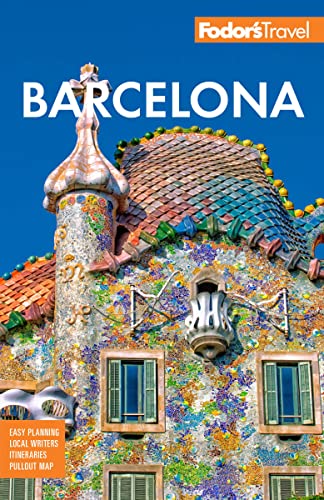Eating and Drinking Well in Catalonia, Valencia, and the Costa Blanca
Cuisine in both Catalonia and Valencia includes classic Mediterranean dishes, and Catalans feel right at home with paella valenciana (Valencian paella). Fish preparations are similar along the coast, though inland favorites vary from place to place.
The grassy inland meadows of Catalonia's northern Alt Empordà region put quality beef on local tables; from the Costa Brava comes fine seafood, such as anchovies from L'Escala and gambas (prawns) from Palamós, both deservedly famous. Romesco—a blend of almonds, peppers, garlic, and olive oil—is used as a vegetable, fish, and seafood sauce in Tarragona, especially during the calçotadas (spring onion feasts) in February. Allioli, garlicky mayonnaise, is another popular topping. The Ebro Delta is renowned for fresh fish, oysters, and eels, as well as rossejat (fried rice in a fish broth). Valencia and the Mediterranean coast are the homeland of paella valenciana. Arròs a banda is a variant in which the fish and rice are cooked separately.
Calçots
The calçot is a sweet spring onion developed by a 19th-century farmer who discovered how to extend the edible portion by packing soil around the base. It is grilled on a barbecue, then peeled and dipped into romesco sauce. In January, the town of Valls holds a calçotada where upward of 30,000 people gather for meals of onions, sausage, lamb chops, and red wine.
Rice
Paella valenciana is one of Spain's most famous gastronomic contributions. A simple country dish dating to the early 18th century, "paella" refers to the wide frying pan with short, sturdy handles that's used to cook the rice. Anything fresh from the fields that day, along with rice and olive oil, traditionally went into the pan, but paella valenciana has particular ingredients: short-grain rice, chicken, rabbit, garrofó (a local legume), tomatoes, green beans, sweet peppers, olive oil, and saffron. Paellamarinera (seafood paella) is a different story: rice, cuttlefish, squid, mussels, shrimp, prawns, lobster, clams, garlic, olive oil, sweet paprika, and saffron, all stewed in fish broth. Other paella variations include paella negra, a black rice dish made with squid ink; arròs a banda made with peeled seafood; and fideuà, paella made with noodles.
Seafood Stews
Sèpia amb pèsols is a vegetable and seafood mar i muntanya ("surf and turf") beloved on the Costa Brava: cuttlefish and peas are stewed with potatoes, garlic, onions, tomatoes, and a splash of wine. The picadillo—the finishing touches of flavors and textures—includes parsley, black pepper, fried bread, pine nuts, olive oil, and salt. Es niu ("the nest") of game fowl, cod, tripe, cuttlefish, pork, and rabbit is another Costa Brava favorite. Stewed for a good five hours, this is a much-celebrated wintertime classic. You'll also find suquet de peix, the Catalan fish stew, at restaurants along the Costa Brava.
Fruits and Vegetables
Valencia and the eastern Levante region have long been famous as Spain's huerta, or garden. The alluvial soil of the littoral produces an abundance of everything from tomatoes to asparagus, peppers, chard, spinach, onions, artichokes, cucumbers, and the whole range of Mediterranean bounty. Catalonia's Maresme and Empordà regions are also fruit and vegetable bowls, making this coastline a true cornucopia of fresh produce.
Wines
The Penedès wine region west of Barcelona has been joined by new wine Denominations of Origin from all over Catalonia. Alt Camp, Tarragona, Priorat, Montsant, Costers del Segre, Pla de Bages, Alella, and Empordà all produce excellent reds and whites to join Catalonia's sparkling cava on local wine lists. The rich, full-bodied reds of Montsant and Priorat, especially, are among the best in Spain.




